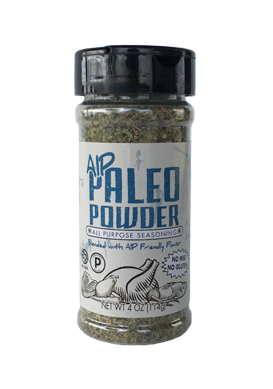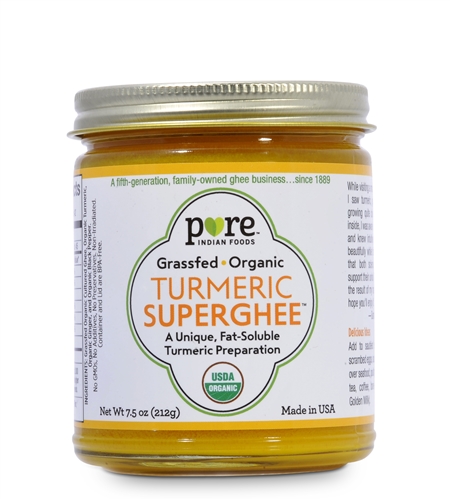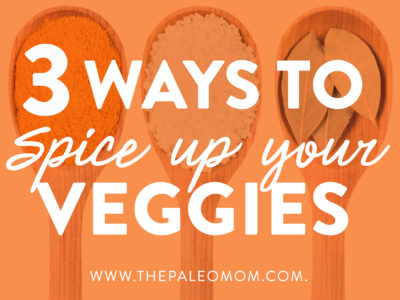I enjoy dispelling the widely popular myth that Paleo is a “meat heavy” diet by focusing about three quarters of every plate on vegetables (see The Importance of Vegetables, and The Diet We’re Meant to Eat, Part 3: How Much Meat versus Veggies?). The reason behind my #threequartersveggies mantra is pretty simple: the statistical relationships between vegetable consumption and mortality or disease risk make it clear that the more vegetables we eat, the more protected we are. For every serving of vegetables or fruit we consume, we reduce the risk of all-cause mortality (a measurement of overall health and longevity) by 5 percent, with the greatest risk reduction seen with 8 servings per day and more (see The Importance of Vegetables, Veggiephobia: Why limiting your vegetable intake might be slowing down healing and The Importance of Nutrient Density). In fact, I would go so far as to describe Paleo as a plant-based diet, although we also embrace the valuable nutrition we get from quality animal foods (see The Diet We’re Meant to Eat, Part 3: How Much Meat versus Veggies?, Grass-Fed Beef: A Superfood worth the Premium Price, The Importance of Fish in Our Diets, Why Everyone Should Be Eating Organ Meat and Oysters, Clams, and Mussels, Oh My! Nutrition Powerhouses or Toxic Danger?).
Table of Contents[Hide][Show]
 We can easily summarize the scientific literature this way: Eight servings of vegetables and fruits per day is the absolute minimum to support health. And, the more we eat, the better. If we’re transitioning from a Standard American Diet to a nutrient-dense Paleo one, this might seem like a huge transition! One of the best ways we can get inspired to eat more veggies is to make them absolutely delicious!
We can easily summarize the scientific literature this way: Eight servings of vegetables and fruits per day is the absolute minimum to support health. And, the more we eat, the better. If we’re transitioning from a Standard American Diet to a nutrient-dense Paleo one, this might seem like a huge transition! One of the best ways we can get inspired to eat more veggies is to make them absolutely delicious!
I’ve been eating about 10 to 14 servings of veggies a day for nearly 5 years, so I’ve developed some pretty tried and true tricks to spice up my veggies, avoid boredom and entice my family. In this post, I’ll share three of my all-time favorite tricks to make bland and boring veggies a thing of the past!
 Salt and Season!
Salt and Season!
Roasting veggies might be the simplest way to pack them full of flavor with very little hands-on time. And, because it’s easy to roast many different veggies at once, they make it easy to increase the diversity of your veggie intake (hello, healthy gut microbe friends!)!
I like to rely on a couple wide sheet pans and good quality fats like lard, tallow, ghee (more below!) or high-quality olive oil for roasting (see Olive Oil Redemption: Yes, It’s a Great Cooking Oil!). But the real secret here is a wonderful spice blend or, at the very least, a mineral-rich dose of Himalayan sea salt (see Is Salt Paleo?).
 It’s surprisingly easy to put together your own spice blends! My staples are garlic and onion powder, salt, and herbs like rosemary, sage and oregano. If you tolerate nightshades, paprika and chili powder can add a punch of flavor to veggies. Or, go bold with curry or masala blends!
It’s surprisingly easy to put together your own spice blends! My staples are garlic and onion powder, salt, and herbs like rosemary, sage and oregano. If you tolerate nightshades, paprika and chili powder can add a punch of flavor to veggies. Or, go bold with curry or masala blends!
For an easier option, I love the AIP Paleo Powder. Nightshade-free, seed-free blends can be difficult to buy in stores, and I find that many contain paprika. So, I’ve really enjoyed being able to simply reach for this spice blend when I’m putting together a quick meal for my family. It’s a perfect all-purpose spice blend, and is so versatile that I’ve been spreading it on everything from chicken to veggies. It’s a lovely base layer of flavor, too, so you could use it to make plenty of unique blends on your own. I particularly like pairing it with Greek-inspired flavors like garlic, lemon zest and oregano.
Mix Up a Salad!
 Creamy salads are an excellent alternative to warm vegetables as the weather mellows out—especially when they give us a dose of healthy fats to help us absorb fat-soluble nutrients in our veggies! If you want something a bit more exciting than a bland salad with dressing, why not try a classic mayo-based coleslaw (like my recipe for The Best Creamy Coleslaw!), broccoli salad or even a nightshade-free AIP ‘Notato’ Salad!
Creamy salads are an excellent alternative to warm vegetables as the weather mellows out—especially when they give us a dose of healthy fats to help us absorb fat-soluble nutrients in our veggies! If you want something a bit more exciting than a bland salad with dressing, why not try a classic mayo-based coleslaw (like my recipe for The Best Creamy Coleslaw!), broccoli salad or even a nightshade-free AIP ‘Notato’ Salad!
The key to making all these dishes Paleo is, of course, a delicious Paleo-friendly mayonnaise. We know that most store-bought mayonnaises are made with inflammatory vegetable oils like soy or canola. So, it’s been especially exciting to see incredible products like Primal Kitchen Foods Mayo hit the market! This mayo is made with cage-free eggs and avocado oil. It has a very light and tangy flavor, and I think it makes a great base for creamy salads. Or, for a fun kitchen project, try making my recipe for Paleo Mayo and Ranch Dip. This recipe might seem intimidating, but you won’t believe how simple the process is! Once you start making mayonnaise for yourself you’ll start to understand just how versatile this condiment really is. You may even come up with some recipes yourself!
Following the AIP? Avocado and lemon juice make a pretty tasty mayo substitute. Blend together 1 tablespoon of fresh lemon juice for every half an avocado and thin to your desired consistency with coconut milk. Or simply include chopped avocado and a tangy dressing (see Green Salad with Italian Vinaigrette) in your favorite salad to mix it up! Want more specific inspiration? Check out my recipe for Shrimp, Avocado, Mango and Fennel Salad.
Add Flavor with Fat!
 Whether you’re roasting, sautéing or just drizzling it on top, a healthy nutrient-rich fat is a great way to impart natural (and awesome) flavor and nutrition to your veggies. Ghee is one of my favorite all-purpose cooking fats. Since lactose and casein are almost entirely removed from ghee (and even more so if you’re using a cultured ghee like the one made by Pure Indian Foods), many of us who can’t tolerate dairy find we do well with this fat (see The Great Dairy Debate and 5 Easy Swaps for Your Favorite Dairy Products. Also, check out my friend Eileen’s post for more on AIP and ghee). And that’s awesome, because ghee is packed with nutrition!
Whether you’re roasting, sautéing or just drizzling it on top, a healthy nutrient-rich fat is a great way to impart natural (and awesome) flavor and nutrition to your veggies. Ghee is one of my favorite all-purpose cooking fats. Since lactose and casein are almost entirely removed from ghee (and even more so if you’re using a cultured ghee like the one made by Pure Indian Foods), many of us who can’t tolerate dairy find we do well with this fat (see The Great Dairy Debate and 5 Easy Swaps for Your Favorite Dairy Products. Also, check out my friend Eileen’s post for more on AIP and ghee). And that’s awesome, because ghee is packed with nutrition!
Besides being a good source of conjugated linoleic acid and vitamins A,D, E and K (including K2!), ghee is just plain tasty! Its flavor is a lot like butter, so it really shines in sautees and on roasted veggies. I always look for ghee that comes from grass-fed cows. When it comes to veggies, I’m especially excited about Pure Indian Foods’ new line of Spiced Ghee.
Nutrivore Weekly Serving Matrix
An easy-to-use and flexible weekly checklist
to help you maximize nutrient-density.
The Weekly Serving Matrix is very helpful! I’ve been eating along these lines but this really helps me know where to focus vs. which foods serve a more secondary role. It’s super helpful and has taken a lot of worry out of my meal planning. Thanks!
Jan
I’ve been a big fan of Pure Indian Foods for many years now. Their cultured ghee is the only dairy product my youngest daughter tolerates, and their Coffee ++ Ghee is a staple in my morning mug. So, when I found out they were launching a line of spiced ghee—their high-quality grass-fed ghee infused with various herb and spice blends—I couldn’t wait to try them out!
Their flavors include Garlic, Herbes de Provence, Italian, Indian Dessert, Niter Kebbeh (an Ethiopian blend), and Digestive ghee. Their sampler pack is a great way to figure out which flavors you prefer for your veggies!
If you prefer a DIY option, you can of course combine your own ghee or other cooking fat with a spice blend like AIP Paleo Powder or your own mix. Toss your veggies up for a sauté or roast and watch your daily veggie servings soar!










